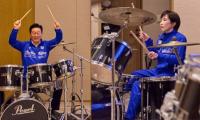Reverse-engineering the Supreme Court
Chief Justice Umar Ata Bandial is a good man faced with an impossible situation. No matter what he does, he is likely to be lambasted by one side or another. And outside the world of political cases, cases continue to pile up at the court’s doorstep in frightening numbers. Thus while the SC disposes of about 5,000 cases per year, there is a backlog of about 50,000 cases which is continuing to grow.
So, what to do?
One response is to demand more judges so that they can decide more cases. I am suggesting the opposite: that we set aside high rhetoric and work backwards from that which is possible. My proposal is to ‘reverse-engineer’ the system so that it matches the capabilities of the judges, rather than conceiving of an ideal judicial system in isolation and ignoring the real-life limitations of the judges.
In short, I want the Supreme Court to accept, and decide, less cases.
At a basic level, it needs to be remembered that no matter what the burdens placed on them, the judges of the Supreme Court are still only human. There is a limit to the amount of work they can do.
More importantly, not every case deserves to be heard by the Supreme Court. In particular, cases involving simple factual disputes, like bail matters or rent disputes, do not need to go before the Supreme Court.
Let me try and articulate this point in factual terms. Out of the roughly 5,000 cases decided every year by the Supreme Court, only about 300 cases get reported in the two main law journals (PLD and SCMR). There is no set criteria for a judgment to be reported but normally, a case is supposed to have some degree of either legal or political significance in order for it to be reported. That means only six per cent of Supreme Court decisions are considered to be worth reporting. Which in turn also means that 94 per cent of Supreme Court decisions have no substantial legal or political significance, at least in the considered opinion the gentlemen who review Supreme Court decisions for a living.
One would then expect the few reported judgments to be masterpieces of jurisprudence. Perhaps. I recently flipped through the last two months of reported Supreme Court judgments and so far as I could see, at least half the reported judgments could have been safely removed without any great loss occurring to the world of law.
My point here is not that the learned judges of the Supreme Court are writing bad judgments. My point instead is that the Supreme Court is being overwhelmed with routine cases the vast majority of which do not involve any substantial questions of law. And that is not the job of any Supreme Court. The US Supreme Court, for example, only decides about 100 cases a year, all of which are reported, and almost all of which definitively settle a disputed question of law. The UK Supreme Court also decides about the same number of cases every year.
Yes, one consequence of my proposal is that more high court judgments will be allowed to become final. But if the Supreme Court believes that high court judgments are routinely erroneous, then the solution is to appoint better high court judges, not to review every high court judgment.
The good news (and also the bad news) is that this is largely a self-created problem. It’s good news because it means the problem is not inherent in the system (and is therefore fixable). It’s bad news because it means the problem lies in social expectations of the judiciary (and in the judiciary’s perception of its role).
By way of background, it needs to be understood that the constitution gives three types of jurisdiction to the Supreme Court -- advisory, original and appellate.
Advisory jurisdiction is when the president sends a reference to the Supreme Court asking its opinion on a question of law. This happens, on average, once every few years.
Original jurisdiction means that the case is being initiated directly in the Supreme Court, which occurs in two types of cases. First, the Supreme Court has original jurisdiction over disputes between provinces as well as disputes between provinces and the Federation. Such cases are also rare. Second, the Supreme Court has original jurisdiction under Article 184(3) to hear cases involving questions of public importance regarding the enforcement of fundamental rights. This jurisdiction can be exercised both on the application of an aggrieved party as well as by the Supreme Court on its own motion (that is: ‘suo motu’).
Cases under Article 184(3) are significant not because of the total number of cases but because they have, in the past, taken up a disproportionate amount of the court’s time (especially during the tenures of Chief Justice Iftikhar Muhammad Chaudhary and Chief Justice Saqib Nisar). Furthermore, these types of cases tend to mushroom and expand. For example, on one date of hearing in a case pertaining to Karachi, there were 118 applications listed for hearing arising out of 42 connected matters!
Appellate jurisdiction also falls into two heads. The first category is appeals of right, where the constitution itself provides that an appeal shall lie to the Supreme Court (such as where a high court has reversed an order of acquittal and sentenced an accused to death). The second category is where the Supreme Court grants ‘leave to appeal’, for example because it feels that there are questions of law which require examination. I do not have exact figures but my understanding is that the majority of all cases before the Supreme Court would fall within the second category.
To return to my original point, the vast majority of cases before the Supreme Court are cases which simply do not belong there and which should have been allowed to become final at the high court stage. Why then does the court persist in hearing such cases, particularly when the end result is an uncontrollable docket?
In terms of Article 184(3) cases, the reason why the court continues to be receptive to such cases is because (a) in some cases, the exercise of such jurisdiction is actually necessary (see, for example, the SC’s intervention in the National Assembly vote of no confidence); and (b) there is now a nexus between the media and the judiciary in which the media continuously unearths scandals for a continuously outraged judiciary, as a consequence of which both get to bask in the glow of public approbation. A less outraged Supreme Court means a court which spends less time on the front pages of the news. Some CJPs are more immune to this sort of flattery and hence waste less time in what is essentially, a performative type of justice. Others get addicted to the limelight.
In terms of the vast majority of routine cases unnecessarily taken up for hearing, the problem is exactly the opposite from that in the case of Article 184(3) cases. In Article 184(3) cases, the issue is the tendency of certain judges to act as if they have suddenly inherited the imperial tradition of ‘Adl-e-Jehangiri’. In terms of the routine cases, the problem is the inability of Supreme Court judges to understand that their role is different from their role in the high court and that they must now focus on dealing at length with important questions of law rather than continuing to deal with routine factual cases.
The further problem with the latter issue is that not every judge, with great respect, is cut out to handle issues at a Supreme Court level. This is not intended as a matter of disrespect. Not every first-class cricketer is cut out for test cricket, no matter how many years they have spent toiling in the trenches. The same is true for judges.
The point I am making is fairly simple: if judges are picked for their experience in handling routine matters (ie: on the basis of seniority) they will happily accept routine matters for hearing at the Supreme Court level as well. On the other hand, if Supreme Court judges are picked for their ability to produce judgments which definitively resolve complicated questions of law (ie: on merit), then the court too will focus on such issues. Hence appointing the right judges is key.
Let me close by making one final point: if tomorrow the Supreme Court tries to radically reduce the number of cases it hears, it will be opposed tooth and nail by the bar associations. This is because lawyers have become accustomed to a legal system in which high court judgments are routinely appealed. My advice, if accepted, will therefore certainly result in headaches for the court. At the same time, the current system needs to change. And only the Supreme Court is capable of leading that change.
The writer is a lawyer of the Supreme Court. The views expressed in this column do not represent the views of his firm.
Twitter: @laalshah
-
 Ariana Madix And Tom Sandoval Settle Legal Dispute
Ariana Madix And Tom Sandoval Settle Legal Dispute -
 Justin Baldoni Says He Held A Prayer Gathering Before Deposition In Blake Lively Case
Justin Baldoni Says He Held A Prayer Gathering Before Deposition In Blake Lively Case -
 Travis, Jason Kelce React To Mom Donna's 'Traitors' Stint
Travis, Jason Kelce React To Mom Donna's 'Traitors' Stint -
 Enjoy Lee, Takaichi’s Viral Jamming Session, In Case You Missed It
Enjoy Lee, Takaichi’s Viral Jamming Session, In Case You Missed It -
 MrBeast Admits He's Unsure About Having Kids - Here's Why
MrBeast Admits He's Unsure About Having Kids - Here's Why -
 Prince Harry Carries Heartbreaking Hope For Archie, Lilibet Who Are Not Sharing In Their Royal Heritage
Prince Harry Carries Heartbreaking Hope For Archie, Lilibet Who Are Not Sharing In Their Royal Heritage -
 Tom Brady Breaks Silence On 'personal Life' After Alix Earle Rumors
Tom Brady Breaks Silence On 'personal Life' After Alix Earle Rumors -
 Guy Fieri Drops Health Update After Accident That Left Him In A Wheelchair
Guy Fieri Drops Health Update After Accident That Left Him In A Wheelchair -
 Experts Weigh In: Is Prince Harry Operating A PR Stunt Or The Invictus Games’
Experts Weigh In: Is Prince Harry Operating A PR Stunt Or The Invictus Games’ -
 Inside Kate Middleton’s Biography With Secrets From St Andrews To Harry & Meghan’s Royal Exit
Inside Kate Middleton’s Biography With Secrets From St Andrews To Harry & Meghan’s Royal Exit -
 Paul Mescal Reveals Shocking Move He Made In 'Hamnet'
Paul Mescal Reveals Shocking Move He Made In 'Hamnet' -
 'Kanye West Is Human Too'
'Kanye West Is Human Too' -
 Prince William Hands Kate Middleton Something Highly Sensitive To Manage With Coronation
Prince William Hands Kate Middleton Something Highly Sensitive To Manage With Coronation -
 Critics Get Honest About 'A Knight Of The Seven Kingdoms'
Critics Get Honest About 'A Knight Of The Seven Kingdoms' -
 Goldie Hawn Spills Secret Behind Kate Hudson’s Screen Talent
Goldie Hawn Spills Secret Behind Kate Hudson’s Screen Talent -
 Why Harry Unlikely To Meet William, Kate During UK Return?
Why Harry Unlikely To Meet William, Kate During UK Return?



